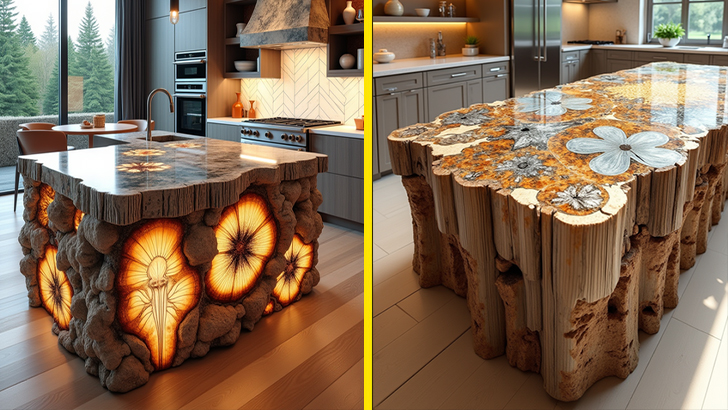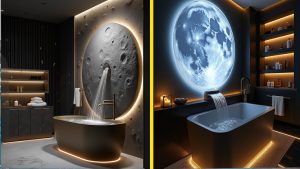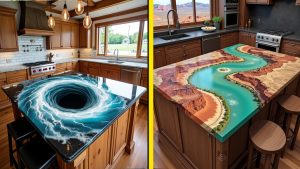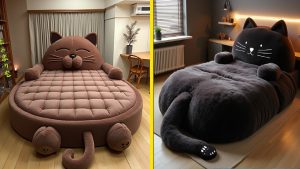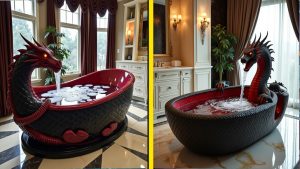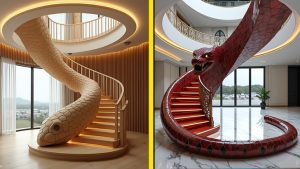In the ever-evolving world of interior design, homeowners and designers continually seek unique elements that blend history, art, and functionality. Petrified wood kitchen islands have emerged as a captivating centerpiece, transforming ordinary kitchens into spaces of ancient elegance and contemporary chic. These islands are not just functional fixtures; they are pieces of history, artfully preserved over millions of years, now gracing modern homes with their unparalleled beauty.
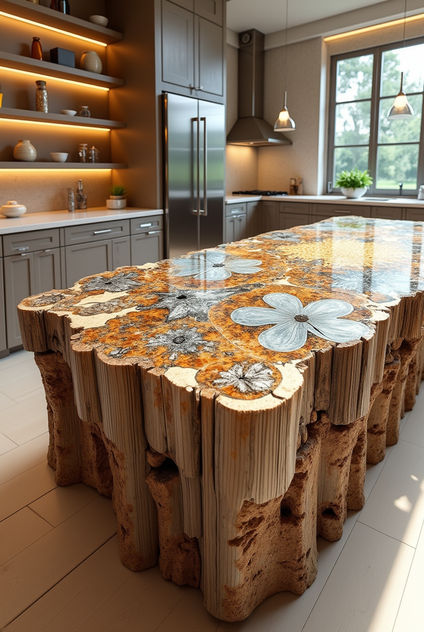
Understanding Petrified Wood
Petrified wood is a type of fossilized remains of terrestrial vegetation. It forms when plant material is buried by sediment and protected from decay due to oxygen and organisms. Over millions of years, mineral-laden water flows through the sediment, replacing the original plant material with silica, calcite, pyrite, or other inorganic materials such as opal. This process results in a stone-like replica of the original wood, preserving its structure and intricate details.
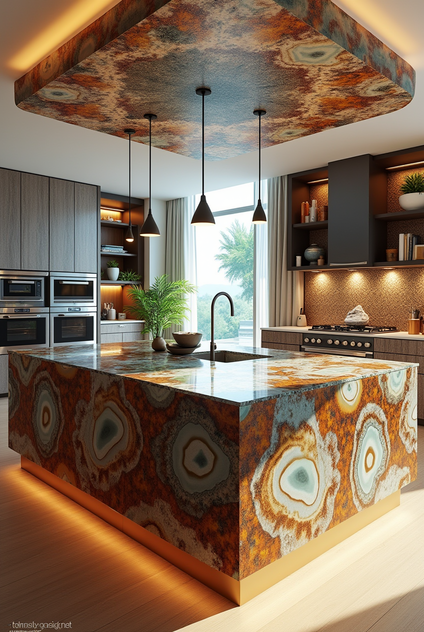
The Allure of Petrified Wood in Interior Design
Incorporating petrified wood into interior spaces offers a unique blend of natural history and aesthetic appeal. Each piece is distinct, showcasing patterns and colors that reflect the minerals present during its formation. The rich hues, ranging from deep browns and blacks to vibrant reds and oranges, add warmth and character to any space.
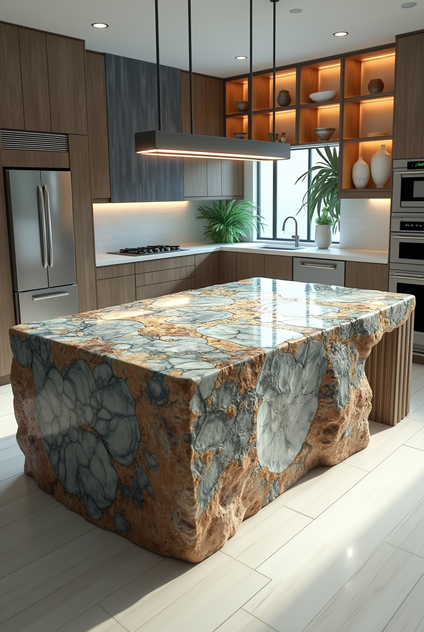
Petrified Wood Kitchen Islands: A Fusion of Form and Function
A kitchen island serves as the heart of culinary activity, providing both workspace and a gathering spot for family and friends. Utilizing petrified wood for this central feature elevates the kitchen’s ambiance, offering a tactile connection to Earth’s ancient past.
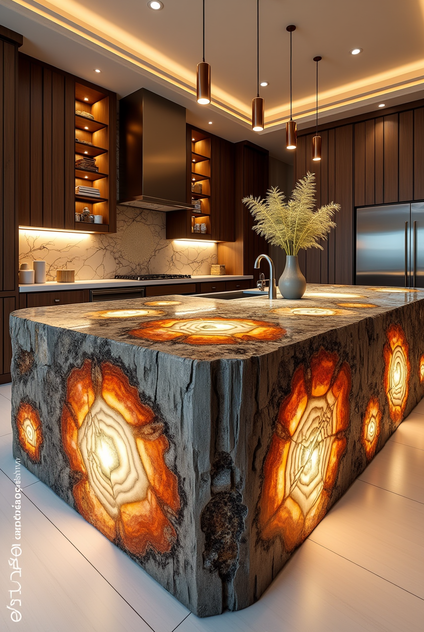
Design Features of Petrified Wood Kitchen Islands
Unique Aesthetics: Each island is a one-of-a-kind masterpiece, with patterns and textures that cannot be replicated. The natural variations in the wood create a visual focal point, making the island a conversation starter.
Surface Finishes: Petrified wood islands can be customized with different finishes to suit various design preferences. A polished surface offers a sleek, modern look, while a raw, natural texture provides a rustic charm.
Integrated Seating: Some designs feature built-in seating, with a lip extending from the edge to accommodate stools. This addition makes the island a multifunctional space for dining, socializing, and meal preparation.
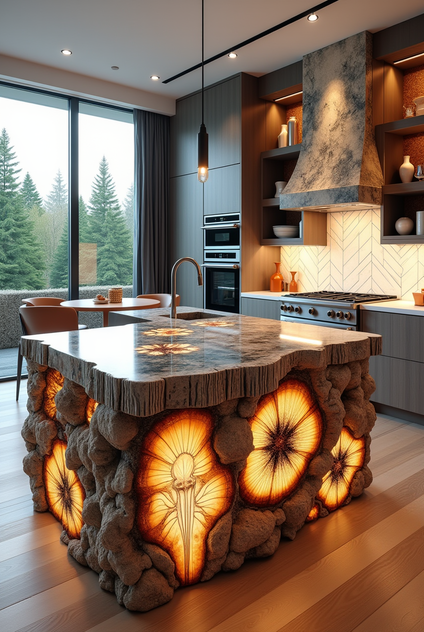
Practical Considerations
Durability: Petrified wood is incredibly hard and resistant to scratches and heat, making it an excellent choice for a high-traffic area like the kitchen.
Maintenance: The non-porous nature of petrified wood makes it resistant to stains and easy to clean. Regular wiping with a damp cloth is typically sufficient to maintain its luster.
Installation: Due to its density, petrified wood is heavy. Professional installation is recommended to ensure proper support and handling.
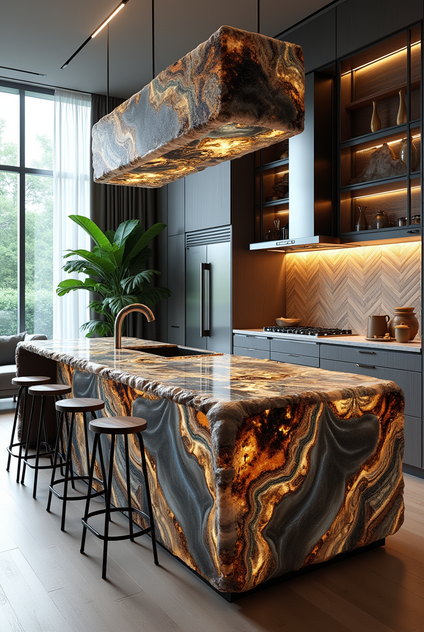
Incorporating Petrified Wood into Various Design Styles
Modern Kitchens: Pairing a polished petrified wood island with sleek cabinetry and stainless steel appliances creates a harmonious blend of natural and contemporary elements.
Rustic Kitchens: A raw-finished petrified wood island complements rustic design elements like exposed beams, stone walls, and vintage fixtures, enhancing the cozy, lived-in feel.
Eclectic Spaces: The unique patterns and colors of petrified wood make it a versatile addition to eclectic designs, where mixing and matching different styles and textures is encouraged.
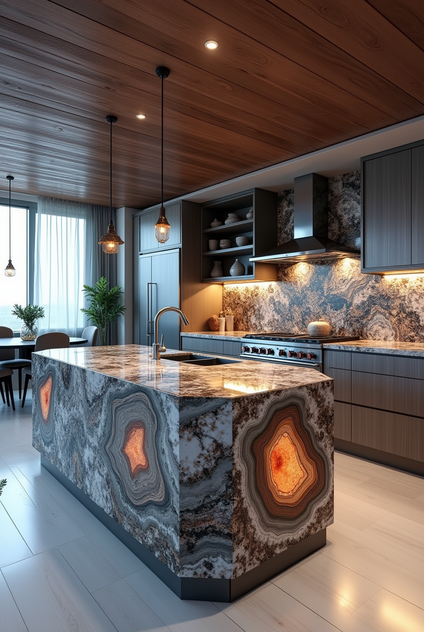
Sourcing Petrified Wood Kitchen Islands
Petrified wood is sourced from various locations worldwide, including regions in the United States, Indonesia, and Madagascar. When selecting a petrified wood kitchen island, it’s essential to work with reputable suppliers who can provide authentic, high-quality pieces. Customization options are often available, allowing homeowners to choose specific sizes, shapes, and finishes that align with their design vision.
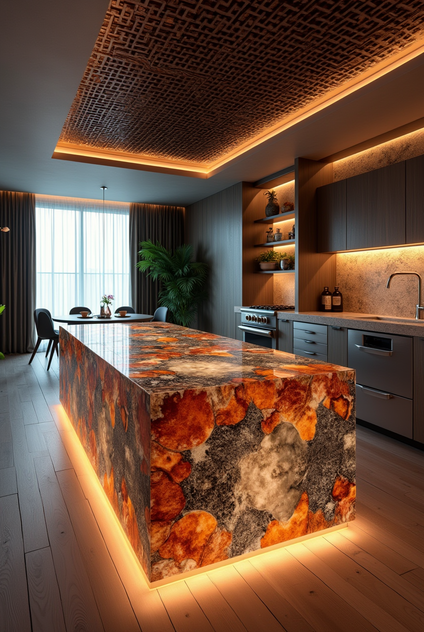
Conclusion
Petrified wood kitchen islands offer a unique opportunity to infuse your kitchen with a blend of ancient history and modern design. Their unparalleled beauty, durability, and functionality make them a worthwhile investment for those looking to create a distinctive and inviting culinary space. By incorporating a piece of Earth’s natural artistry into your home, you not only enhance its aesthetic appeal but also establish a timeless connection to the planet’s rich geological past.
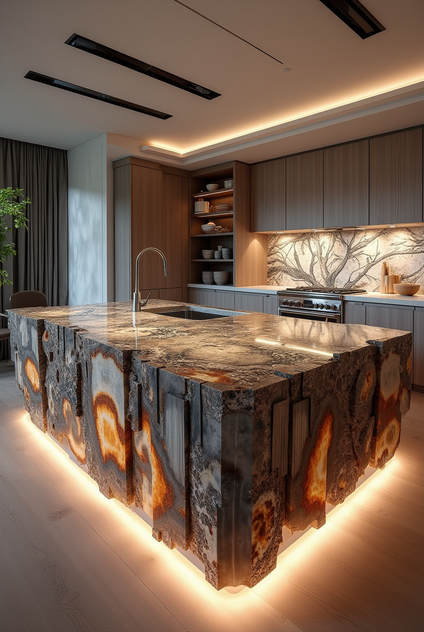
FAQs
What is petrified wood?
Petrified wood is fossilized wood that has undergone a process of mineralization over millions of years, resulting in a stone-like material that retains the original structure of the wood.
How do I maintain a petrified wood kitchen island?
Maintenance is straightforward; regular cleaning with a damp cloth is usually sufficient. Avoid using abrasive cleaners to preserve the surface finish.
Is a petrified wood kitchen island durable?
Yes, petrified wood is extremely durable, resistant to scratches, heat, and stains, making it ideal for kitchen environments.
Can I customize the size and shape of a petrified wood island?
Many suppliers offer customization options, allowing you to select dimensions and finishes that suit your specific kitchen layout and design preferences.
Where can I purchase a petrified wood kitchen island?
Petrified wood kitchen islands can be sourced from specialty retailers, online marketplaces, and directly from artisans who specialize in working with this unique material.
Please don’t forget to leave a review.
